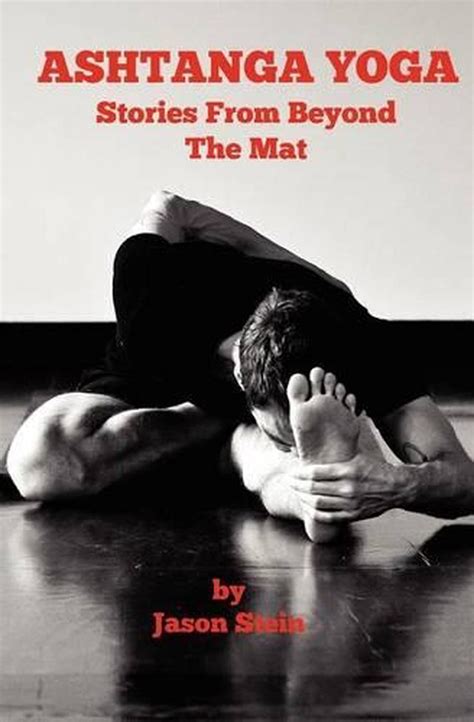Discovering the Right Yoga Style for Your First Experience: A Comprehensive Guide
Choosing your first yoga style can be an overwhelming task with the vast variety of options available today. Whether you’re seeking physical benefits, mental clarity, or spiritual connection, finding the right style is essential for your enjoyment and long-term practice. This guide will help you navigate through the most common styles, key considerations, and what to expect when stepping onto the mat for the first time.
Introduction: Why Selecting the Right Yoga Style Matters
Yoga is a centuries-old practice with numerous styles that have evolved to cater to diverse needs, from athletic performance to mental well-being. However, not all yoga styles are suitable for beginners or for specific goals such as flexibility, strength, or relaxation. This guide is designed to help you select a yoga style that aligns with your current fitness level, personal goals, and preferences.
There are many misconceptions about yoga, one of which is that it is a one-size-fits-all practice. Yoga, in fact, ranges from slow, restorative styles to more rigorous, physically demanding practices. Without the right guidance, you might start with a style that doesn’t suit your goals, potentially leading to frustration, injury, or even disinterest. To avoid these pitfalls, we will break down the major types of yoga, explain their benefits and differences, and provide you with actionable insights on how to make the best choice for yourself.
Key Concepts of Yoga Styles
Before delving into the different yoga styles, it’s important to understand a few key concepts about yoga:
- Asana: Refers to the physical postures or poses in yoga practice. Each style emphasizes different asanas.
- Pranayama: Refers to breath control, a fundamental element of yoga that promotes relaxation, concentration, and vitality.
- Mindfulness: In yoga, mindfulness refers to being fully present in the moment and observing one’s thoughts without judgment.
- Flow (Vinyasa): A sequence of movements coordinated with breath. Some yoga styles prioritize flow, while others focus on holding static postures.
Historical Context: Evolution of Yoga Styles
Yoga’s roots can be traced back over 5,000 years to ancient India, with its development largely documented in the ancient texts like the Vedas and the Upanishads. However, modern yoga, as we know it, was shaped significantly during the early 20th century, with influential teachers like T. Krishnamacharya and B.K.S. Iyengar contributing to the development of various styles that cater to different physical and spiritual needs. Today, yoga has proliferated into a multitude of styles, each emphasizing different aspects of physical, mental, or spiritual development.
Understanding this historical evolution helps contextualize why there are so many yoga styles today, each with its own set of philosophies, practices, and physical demands.
Current State Analysis: Common Yoga Styles for Beginners
Here are some of the most popular yoga styles that are ideal for beginners:
1. Hatha Yoga
Hatha yoga is often considered the entry point to yoga for many beginners. It focuses on basic postures (asanas), slow-paced movements, and simple breathing exercises. The primary goal is to introduce students to mindfulness, alignment, and relaxation techniques.
- Best for: Beginners looking for a gentle introduction to yoga.
- Benefits: Builds flexibility, stress relief, and body awareness.
- Challenges: Some may find it too slow if they’re seeking more vigorous physical activity.
2. Vinyasa Yoga
Vinyasa yoga is a dynamic style that emphasizes smooth transitions between postures, synchronized with breath. It is a faster-paced style that offers more physical activity.
- Best for: Those looking for a physically active yoga practice that builds strength and flexibility.
- Benefits: Improves cardiovascular health, builds core strength, and enhances coordination.
- Challenges: The fast pace may be challenging for those without prior experience in yoga or exercise.
3. Iyengar Yoga
Iyengar yoga is known for its meticulous attention to detail and alignment. This style uses props such as blocks, straps, and blankets to ensure that students can perform the postures safely and correctly, regardless of flexibility or strength.
- Best for: Individuals with injuries, beginners needing a slower pace, or those who want to improve posture.
- Benefits: Builds strength, alignment, and mindfulness. Ideal for people with physical limitations.
- Challenges: The slower pace and attention to detail may frustrate those looking for a more flowing or vigorous practice.
4. Kundalini Yoga
Kundalini yoga incorporates dynamic breathing techniques, chanting, and postures designed to awaken the energy at the base of the spine, often referred to as Kundalini energy.
- Best for: Individuals seeking a more spiritual or meditative experience.
- Benefits: Enhances mental clarity, emotional balance, and spiritual growth.
- Challenges: The spiritual and chanting elements may be unfamiliar or uncomfortable for some beginners.
5. Restorative Yoga
Restorative yoga focuses on relaxation and stress relief by holding poses for extended periods with the support of props. It is ideal for people seeking recovery or those who want to focus on deep relaxation.
- Best for: Anyone dealing with stress, burnout, or injuries.
- Benefits: Promotes deep relaxation, aids recovery, and improves mental clarity.
- Challenges: May feel too passive for those looking for a more active or strength-building practice.
6. Bikram Yoga
Bikram yoga is a specific form of hot yoga that involves practicing a set sequence of 26 postures in a heated room. It is physically demanding and requires stamina and discipline.
- Best for: Those looking for a physically intense workout in a controlled environment.
- Benefits: Increases flexibility, builds endurance, and promotes detoxification through sweating.
- Challenges: The high temperature can be overwhelming for some, especially beginners or those with health conditions.
Practical Applications: Choosing the Right Style for Your Goals
Before deciding on a yoga style, it’s important to reflect on your personal goals. Are you looking to increase flexibility, relieve stress, build strength, or cultivate a deeper spiritual practice? Here’s a guide to match your goals with the most suitable yoga styles:
| Goal | Recommended Yoga Styles |
|---|---|
| Improve Flexibility | Hatha, Iyengar, Restorative |
| Build Strength | Vinyasa, Ashtanga, Bikram |
| Reduce Stress | Restorative, Kundalini, Hatha |
| Spiritual Growth | Kundalini, Jivamukti |
| Cardio Workout | Vinyasa, Bikram |
Case Studies: Real-Life Experiences of Yoga Beginners
Case Study 1: Sarah’s Search for Stress Relief
Sarah, a 35-year-old professional, turned to yoga to manage her stress. After experimenting with several styles, she found that Restorative Yoga provided the deep relaxation and mental clarity she needed to unwind from her hectic job.
Case Study 2: Mark’s Journey to Build Strength
Mark, a fitness enthusiast, was looking to add more flexibility and balance to his weightlifting routine. He initially tried Vinyasa Yoga but eventually gravitated towards Ashtanga Yoga for its structured, progressive sequences that helped him build both strength and flexibility over time.
Stakeholder Analysis: Who Benefits from Each Yoga Style
When choosing a yoga style, it’s important to consider who will benefit most from each practice:
- Beg
Ashtanga Yoga: Unveiling the Hidden Benefits Beyond the Mat
Ashtanga Yoga is often revered for its rigorous physical practice, but what lies beneath the surface of this dynamic discipline? Beyond flexibility and strength, the philosophy and practice of Ashtanga Yoga offer transformative benefits that transcend the mat. This article explores those hidden benefits, providing an in-depth analysis of the key concepts, historical context, and how it has evolved into a practice that offers holistic well-being. From improved mental health to better decision-making, Ashtanga Yoga’s impacts are far-reaching.
Key Concepts of Ashtanga Yoga
At its core, Ashtanga Yoga is a structured series of poses, or asanas, combined with breath control (pranayama), gaze (drishti), and internal locks (bandhas). Unlike other forms of yoga, it follows a specific sequence, meant to build strength, flexibility, and endurance. However, the practice extends beyond physicality and encompasses philosophical teachings that integrate mind, body, and spirit.
- Vinyasa: The alignment of breath and movement.
- Bandhas: Internal energy locks used to stabilize and energize the body.
- Drishti: Focused gaze used to develop concentration.
- Eight Limbs of Yoga: Ashtanga is based on Patanjali’s Yoga Sutras, which outline ethical practices (yamas and niyamas), postures (asanas), breath control (pranayama), and meditation practices.
Historical Context
Ashtanga Yoga’s roots trace back to the ancient Indian sage Patanjali, who is credited with codifying the practice in the “Yoga Sutras,” though its physical form as practiced today was developed in the 20th century by Tirumalai Krishnamacharya and his disciple K. Pattabhi Jois. Historically, Ashtanga Yoga was seen as a sacred practice intended to bring practitioners closer to samadhi, or enlightenment. Over the years, it has adapted to the needs of the modern world, balancing physical vigor with meditative stillness, but its spiritual core remains unchanged.
Current State Analysis
In today’s fitness-driven society, Ashtanga Yoga is often marketed primarily as a physical workout, but this perspective is limiting. A deeper analysis reveals that its impact on mental health, emotional resilience, and personal growth is significant. Ashtanga practitioners report reduced stress levels, enhanced cognitive function, and better emotional regulation. The structured nature of the practice fosters discipline, which, over time, becomes a cornerstone for improved mindfulness and life balance.
However, Ashtanga Yoga is not without its challenges. Critics argue that its rigid structure can alienate beginners or individuals with injuries. Despite this, modifications and adjustments provided by experienced teachers make it accessible to a broader audience, mitigating these issues.
Practical Applications of Ashtanga Yoga
Ashtanga Yoga’s benefits extend far beyond the mat. The discipline and focus cultivated through the practice can positively impact other areas of life. Below are some practical applications:
- Stress Management: Regular practice helps reduce the physiological and psychological impacts of stress by encouraging mindfulness and deep breathing techniques.
- Improved Decision-Making: The mental clarity gained through Ashtanga Yoga enables better judgment and problem-solving skills.
- Emotional Resilience: Consistent practice helps individuals develop patience, tolerance, and self-control, useful in personal and professional settings.
- Time Management: The structured nature of the Ashtanga sequence can foster better time-management skills in daily life.
Case Studies
Case Study Before Ashtanga After Ashtanga Corporate Executive High stress, burnout, poor work-life balance Improved stress management, emotional regulation, better focus Athlete Frequent injuries, mental fatigue Increased flexibility, reduced injury, enhanced mental clarity Student Poor concentration, anxiety during exams Better focus, improved academic performance, less anxiety Stakeholder Analysis
The key stakeholders in Ashtanga Yoga range from seasoned practitioners to new students, as well as teachers and healthcare professionals. Each group has a different perspective on the benefits and challenges of the practice:
- Seasoned Practitioners: For advanced students, Ashtanga Yoga represents a holistic approach to physical and mental wellness.
- New Students: Beginners might struggle with the discipline required but can experience personal growth over time.
- Teachers: Teachers focus on guiding students through modifications, ensuring the practice is safe and effective.
- Healthcare Professionals: Medical experts are beginning to recognize Ashtanga Yoga’s role in reducing anxiety, depression, and stress.
Implementation Guidelines
To successfully incorporate Ashtanga Yoga into your life, follow these guidelines:
- Commitment: Consistency is key in Ashtanga Yoga. Start with three times a week, gradually building up to a daily practice.
- Teacher Guidance: Seek a certified teacher who can offer personalized adjustments and help with safe practice.
- Patience: Be patient with yourself. Ashtanga Yoga is demanding, but its benefits compound over time.
- Listen to Your Body: Pay attention to your body’s signals, especially if you have any pre-existing injuries.
- Meditation: Incorporate mindfulness and meditation practices to fully reap the mental benefits of Ashtanga Yoga.
Ethical Considerations
Like all wellness practices, Ashtanga Yoga must be approached with ethical mindfulness. A few areas warrant particular attention:
- Cultural Appropriation: Practitioners should acknowledge and respect the historical and cultural origins of Ashtanga Yoga.
- Inclusivity: Ensure that yoga spaces are welcoming to individuals of all backgrounds, skill levels, and body types.
- Physical Safety: Teachers must emphasize safe adjustments and modifications to prevent injury.
Limitations and Future Research
While Ashtanga Yoga offers numerous benefits, it also has limitations. The strict sequences might not suit everyone, especially beginners or those with physical limitations. Additionally, more empirical research is needed to fully understand its long-term impacts on mental and physical health.
Future research could explore the following areas:
- The effects of Ashtanga Yoga on cognitive function and decision-making.
- The impact of Ashtanga on chronic pain and injury recovery.
- How Ashtanga Yoga affects emotional resilience in high-stress professions.
- The role of Ashtanga Yoga in improving sleep quality and mental health.
Expert Commentary
As a comprehensive practice, Ashtanga Yoga reaches beyond just physical fitness. Its mental, emotional, and even spiritual benefits make it a powerful tool for achieving holistic well-being. However, like any discipline, it requires time, patience, and dedication. For those willing to commit, the rewards are profound, offering not just better health, but a more balanced and purposeful life.








